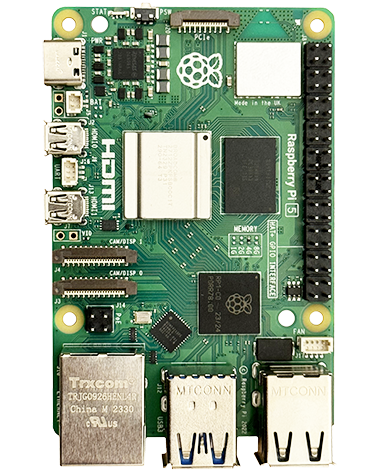Semaphores allow processes to avoid clashes when accessing shared resources, for instance shared memory.
Generating A Random Key
Humans aren't very good at picking random values so use a site like this one: www.random.org/integers/
It won't do a 32bit 1 to 2147483647, but it will do 1 to 1000000000
Simple Example Of Creating & Using A Semaphore
Header Files Needed
#include <sys/sem.h> //Used for semaphores
Defining The Semaphore Your Header File
//----- SEMAPHORE -----
//On linux systems this union is probably already defined in the included sys/sem.h, but if not use this default basic definition:
union semun {
int val;
struct semid_ds *buf;
unsigned short *array;
};
//FUNCTIONS:
static int semaphore1_get_access(void);
static int semaphore1_release_access(void);
//VARIABLES:
static int semaphore1_id;
The Functions
//***********************************************************
//***********************************************************
//********** WAIT IF NECESSARY THEN LOCK SEMAPHORE **********
//***********************************************************
//***********************************************************
//Wait if necessary and then change the semaphore by –1. This is the "wait" operation
static int semaphore1_get_access(void)
{
struct sembuf sem_b;
sem_b.sem_num = 0;
sem_b.sem_op = -1; /* P() */
sem_b.sem_flg = SEM_UNDO;
if (semop(semaphore1_id, &sem_b, 1) == -1) //Wait until free
{
fprintf(stderr, "semaphore1_get_access failed\n");
return(0);
}
return(1);
}
//***************************************
//***************************************
//********** RELEASE SEMAPHORE **********
//***************************************
//***************************************
//Setting the semaphore back to available. This is the "release" operation.
static int semaphore1_release_access(void)
{
struct sembuf sem_b;
sem_b.sem_num = 0;
sem_b.sem_op = 1; /* V() */
sem_b.sem_flg = SEM_UNDO;
if (semop(semaphore1_id, &sem_b, 1) == -1)
{
fprintf(stderr, "semaphore1_release_access failed\n");
return(0);
}
return(1);
}
Create The Semaphore
//----------------------------
//----- CREATE SEMAPHORE -----
//----------------------------
printf("Creating semaphore...\n");
semaphore1_id = semget((key_t)12345, 1, 0666 | IPC_CREAT); //<<<<< SET THE SEMPAHORE KEY (Semaphore key, number of semaphores required, flags)
// Semaphore key
// Unique non zero integer (usually 32 bit). Needs to avoid clashing with another other processes semaphores (you just have to pick a random value and hope - ftok() can help with this but it still doesn't guarantee to avoid colision)
//Initialize the semaphore using the SETVAL command in a semctl call (required before it can be used)
union semun sem_union_init;
sem_union_init.val = 1;
if (semctl(semaphore1_id, 0, SETVAL, sem_union_init) == -1)
{
fprintf(stderr, "Creating semaphore failed to initialize\n");
exit(EXIT_FAILURE);
}
Using The Semaphore
//----- SEMAPHORE GET ACCESS -----
if (!semaphore1_get_access())
exit(EXIT_FAILURE);
//... do the interlocked action ...
//----- SEMAPHORE RELEASE ACCESS -----
if (!semaphore1_release_access())
exit(EXIT_FAILURE);
Deleting The Semaphore
//----------------------------
//----- DELETE SEMAPHORE -----
//----------------------------
//It's important not to unintentionally leave semaphores existing after program execution. It also may cause problems next time you run the program.
union semun sem_union_delete;
if (semctl(semaphore1_id, 0, IPC_RMID, sem_union_delete) == -1)
fprintf(stderr, "Failed to delete semaphore\n");
USEFUL?
We benefit hugely from resources on the web so we decided we should try and give back some of our knowledge and resources to the community by opening up many of our company’s internal notes and libraries through resources like this. We hope you find it helpful.
Please feel free to comment if you can add help to this page or point out issues and solutions you have found, but please note that we do not provide support here. If you need help with a problem please use one of the many online forums.

